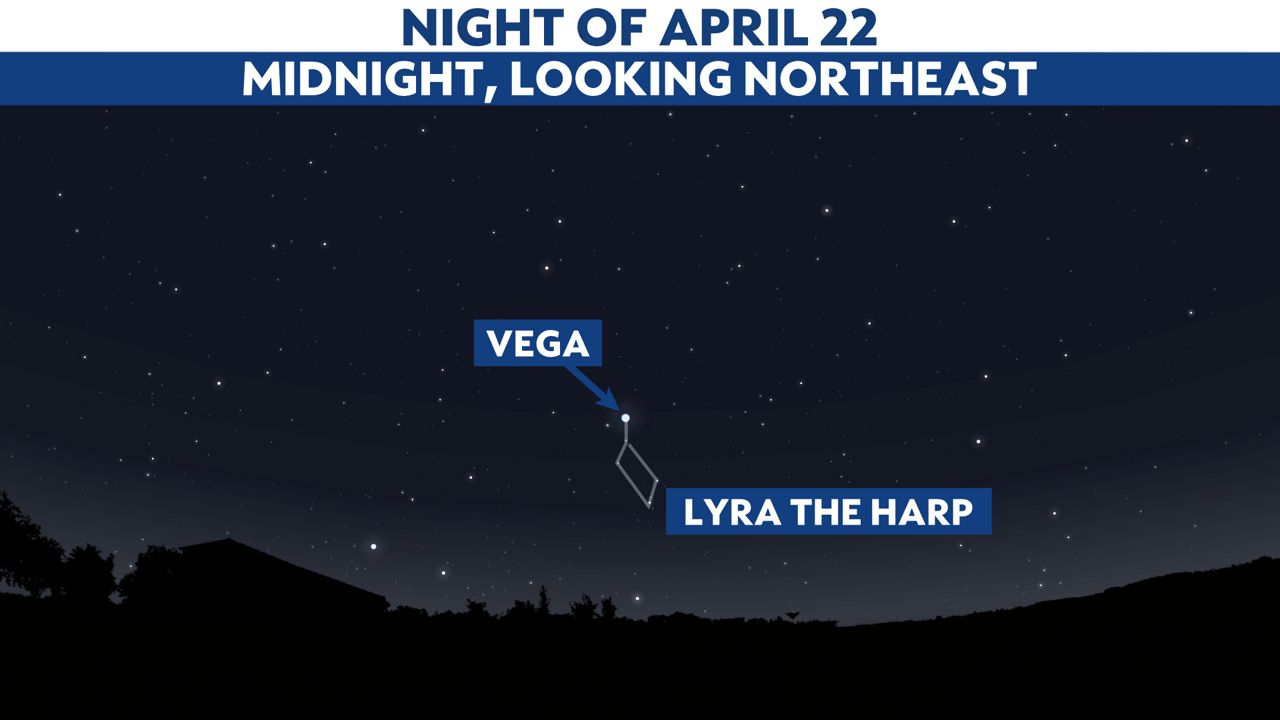The annual Lyrid meteor shower peaks this weekend.
The Lyrids rarely put on a big show, but the moon is lending a hand this year. Since the moon is new (the opposite of full) and dropping below the horizon, we won’t have to deal with bright moonlight washing out the fainter meteors.
Under ideal conditions, a fully dark sky away from city lights, you might see 10 to 15 meteors per hour. The peak comes the night of Saturday, April 22.

Meteors will appear to radiate from the northeast sky in the constellation Lyra the Harp, but “shooting stars” will be visible anywhere in the sky as they burn up in the atmosphere.
The radiant rises between after about 9 or 10 p.m. local time, but the best viewing is from midnight through dawn when it’s higher. Let your eyes adjust to the darkness for at least 15 minutes. Don’t look at your phone or anything else that’s bright, because your eyes will have to adjust again.
The Lyrids happen every April as the Earth passes through dust from Comet Thatcher. It’s one of the oldest known meteor showers, according to NASA, with the first recorded sighting happening in 687 B.C.
Check out more of the celestial sights coming up this year.
Our team of meteorologists dives deep into the science of weather and breaks down timely weather data and information. To view more weather and climate stories, check out our weather blogs section.



